 2001 Mitsubishi Lancer Evolution VII Dimensions, Size & Specs
2001 Mitsubishi Lancer Evolution VII Dimensions, Size & SpecsMeasurements of the 2001 Mitsubishi Lancer Evolution VII, engineered for optimal performance and comfort
| Dimensions | |
|---|---|
| Length: | 4455 mm175.4 in14.6 ft |
| Width: | 1770 mm69.7 in5.8 ft |
| Height: | 1450 mm57.1 in4.8 ft |
| Weight Specifications | |
| Curb Weight: | 1380 kg3042 lbs |
| Tire Specifications | |
| Rims Size: |
|
| Tire Size: |
|
The Mitsubishi Lancer Evolution VII, produced between 2001 and 2003, is a high-performance sedan known for combining sporty dynamics with practical dimensions. This generation measures 4455 mm (175.4 inches) in length, 1770 mm (69.7 inches) in width, and 1450 mm (57.1 inches) in height, making it a compact yet aggressive vehicle on the road. Weighing in at a curb weight of approximately 1380 kg (3042 lbs), it maintains a balanced weight that supports its turbocharged engine and all-wheel-drive system for excellent handling. The Evo VII rides on 17-inch alloy rims paired with 225/45 R17 tires, enhancing its grip and road presence. Its relatively low height contributes to a sporty stance and aerodynamic efficiency. This generation continues to uphold the Lancer Evolution legacy by offering a nimble and stylish sedan that appeals to driving enthusiasts seeking a combination of speed, control, and size efficiency.
Discover the standout features that make the 2001 Mitsubishi Lancer Evolution VII a leader in its class
Have a question? Please check our knowledgebase first.
The Mitsubishi Lancer Evolution VII, produced between 2001 and 2003, measures 4455 mm (175.4 inches) in length, 1770 mm (69.7 inches) in width, and 1450 mm (57.1 inches) in height. These dimensions contribute to its sporty sedan profile, providing a balance between compactness for agility and enough space for performance-oriented components. With these proportions, the Evolution VII maintains a low and aggressive stance, fitting well in its category of high-performance sedans.
The curb weight of the Mitsubishi Lancer Evolution VII is approximately 1380 kg (3042 lbs). This relatively light weight enhances the vehicle's agility, improving acceleration, braking, and cornering capabilities. A lower curb weight contributes to better fuel efficiency and allows the turbocharged engine to deliver lively performance without excessive mass to manage. The weight distribution and suspension setup in the Evo VII are optimized to leverage this curb weight for sharp and responsive handling, making it favored among enthusiasts for both street driving and rally racing.
Yes, the Mitsubishi Lancer Evolution VII fits comfortably into a standard garage. Typical residential garages accommodate vehicles around 2.4 to 2.7 meters (8 to 9 feet) wide and 5.5 to 6 meters (18 to 20 feet) long. With its length of 4455 mm (175.4 inches or roughly 4.46 meters) and width of 1770 mm (69.7 inches or roughly 1.77 meters), the Evo VII is compact enough for most residential garages with room to spare for doors and storage. Its height of 1450 mm (57.1 inches) is well below the typical garage door height.
The Lancer Evolution VII comes equipped with 17-inch rims paired with 225/45 R17 tires, which play a crucial role in its driving dynamics. The 17-inch wheel diameter strikes a balance between handling precision and ride comfort. The 225 mm tire width provides substantial grip on both dry and wet surfaces, supporting the car’s all-wheel-drive system and turbocharged power output. The 45 series tire profile offers a low enough sidewall for good responsiveness in cornering without excessively compromising ride softness. Overall, this setup supports the Evo VII’s reputation for agile, confident handling and strong traction.
While the Mitsubishi Lancer Evolution VII is primarily designed for performance, it still offers practical interior space given its sedan configuration. The overall dimensions allow decent headroom and legroom for front and rear passengers, though rear-seat comfort may be somewhat limited due to the car's sporty suspension and compact width of 1770 mm (69.7 inches). The interior layout focuses on driver engagement with supportive bucket seats and a cockpit-style design, balancing usability with sportiness. Cargo capacity is typical for the segment, sufficient for daily needs but not geared towards large load carrying.
Compared to its predecessor, the Evolution VI, the Mitsubishi Lancer Evolution VII introduced some dimensional and weight changes to enhance performance and comfort. The Evo VII maintained a similar length and width but featured revised aerodynamics and underbody improvements. Its curb weight of about 1380 kg (3042 lbs) was generally on par with or slightly lighter than the Evolution VI, thanks to structural changes and materials optimization. The Evo VII also introduced larger 17-inch wheels over the VI’s smaller rims, improving handling. Overall, the size changes were subtle but contributed to better stability and refined driving dynamics compared to the Evolution VI.
When compared to other high-performance sedans of the early 2000s, such as the Subaru Impreza WRX STI or the BMW M3 E46, the Mitsubishi Lancer Evolution VII is similarly sized but tends to be a bit more compact in width and height. With a length of 4455 mm (175.4 inches), it fits comfortably in the compact sport sedan category. Its width of 1770 mm (69.7 inches) is modest, which helps with agility and maneuverability, especially on tight, technical roads. Other competitors often had similar or slightly larger footprints but with less aggressive all-wheel-drive performance focus. The Evo VII’s size offers a great balance of performance and practicality in its class.
Although the exact ground clearance figure for the Mitsubishi Lancer Evolution VII is not officially published here, typical rally-derived sedans like the Evo VII feature ground clearance around 140-150 mm (5.5-6 inches). This moderate clearance allows the vehicle to maintain good road contact for performance handling on paved and uneven surfaces, while also providing just enough clearance for minor obstacles or speed bumps. The Evo VII's suspension is tuned to optimize this balance, favoring performance without severely compromising everyday usability. Owners can expect agile cornering without frequent undercarriage contact in normal driving conditions.
The Mitsubishi Lancer Evolution VII typically comes with a fuel tank capacity around 60 liters (15.9 US gallons), which provides a reasonable driving range consistent with its performance-oriented turbocharged engine. Cargo volume, given its sedan body style, is approximately 280 to 300 liters (roughly 9.9 to 10.6 cubic feet), which is standard for compact sports sedans. This space is suitable for daily errands and moderate luggage but is less than more conventional non-performance sedans, as some interior packaging compromises are made to accommodate performance parts and structural reinforcements.
Absolutely. The Mitsubishi Lancer Evolution VII remains a highly regarded model among car enthusiasts for its perfect blend of compact size, lightweight design, and impressive performance capabilities. Its dimensions contribute to excellent agility and driver engagement, while the advanced all-wheel-drive system and turbocharged powertrain make it a formidable performer in both street and track settings. The Evo VII's size makes it easy to maneuver in urban environments without sacrificing the dynamic driving experience. Despite being over two decades old, it retains relevance due to its well-rounded engineering and iconic status in the rally-inspired sports sedan category.
Discover similar sized cars.
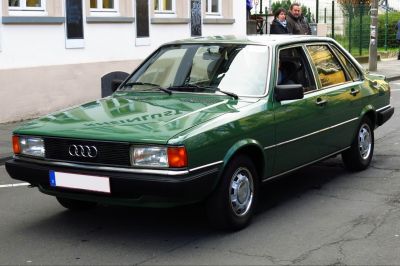
| Production: | 1978-1984 |
|---|---|
| Model Year: | 1978 |
| Length: | 4383-4390 mm172.6-172.8 in |
| Width: | 1682 mm66.2 in |
| Height: | 1355-1376 mm53.3-54.2 in |
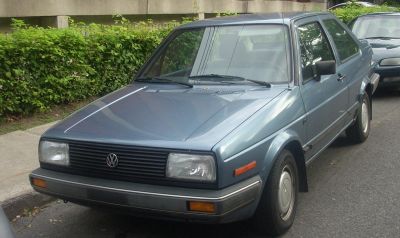
| Production: | 1983-1987 |
|---|---|
| Model Year: | 1984 |
| Length: | 4385 mm172.6 in |
| Width: | 1675 mm65.9 in |
| Height: | 1415 mm55.7 in |
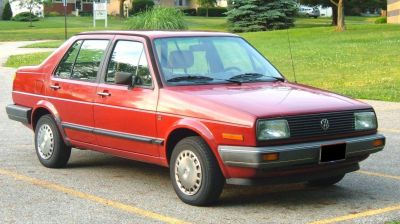
| Production: | 1983-1987 |
|---|---|
| Model Year: | 1984 |
| Length: | 4385 mm172.6 in |
| Width: | 1675 mm65.9 in |
| Height: | 1415 mm55.7 in |
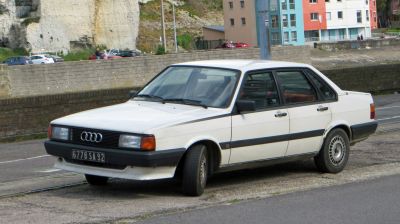
| Production: | 1984-1987 |
|---|---|
| Model Year: | 1984 |
| Length: | 4406 mm173.5 in |
| Width: | 1682-1695 mm66.2-66.7 in |
| Height: | 1345-1397 mm53.0-55.0 in |
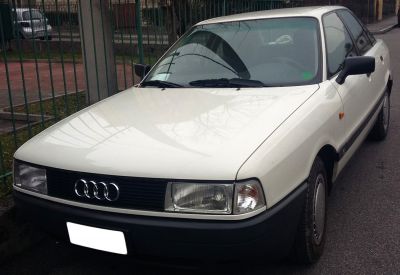
| Production: | 1986-1991 |
|---|---|
| Model Year: | 1986 |
| Length: | 4393 mm173.0 in |
| Width: | 1695 mm66.7 in |
| Height: | 1397 mm55.0 in |
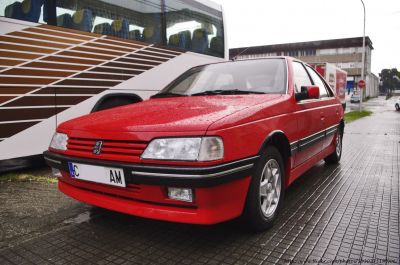
| Production: | 1987-1994 |
|---|---|
| Model Year: | 1987 |
| Length: | 4408 mm173.5 in |
| Width: | 1714 mm67.5 in |
| Height: | 1406 mm55.4 in |
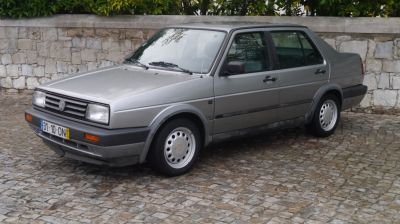
| Production: | 1987-1991 |
|---|---|
| Model Year: | 1988 |
| Length: | 4385 mm172.6 in |
| Width: | 1675 mm65.9 in |
| Height: | 1415 mm55.7 in |
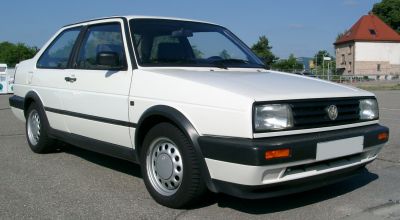
| Production: | 1987-1991 |
|---|---|
| Model Year: | 1988 |
| Length: | 4385 mm172.6 in |
| Width: | 1675 mm65.9 in |
| Height: | 1415 mm55.7 in |
